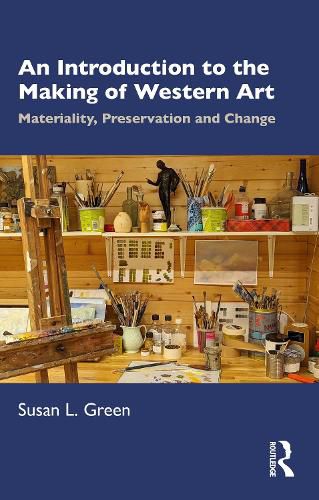Readings Newsletter
Become a Readings Member to make your shopping experience even easier.
Sign in or sign up for free!
You’re not far away from qualifying for FREE standard shipping within Australia
You’ve qualified for FREE standard shipping within Australia
The cart is loading…






This book is the first introduction to Western art that not only considers how choice of materials can impact form, but also how objects in different media can alter in appearance over time, and the role of conservators in the preservation of our cultural heritage.
The first four chapters cover wall and easel paintings, sculpture, drawings, and prints, from the late Middle Ages to the present day. They examine, with numerous examples, how these works have been produced, how they might have been transformed, and how efforts regarding their preservation can sometimes be misleading or result in controversy. The final two chapters look at how photography, new techniques, and modern materials prompted innovative ways of creating art in the twentieth century, and how the rapid expansion of technology in the twenty-first century has led to a revolution in how artworks are constructed and seen, generating specific challenges for collectors, curators, and conservators alike.
This book is primarily directed at undergraduates interested in art history, museum studies, and conservation, but will also be of interest to a more general non-specialist audience.
$9.00 standard shipping within Australia
FREE standard shipping within Australia for orders over $100.00
Express & International shipping calculated at checkout
This book is the first introduction to Western art that not only considers how choice of materials can impact form, but also how objects in different media can alter in appearance over time, and the role of conservators in the preservation of our cultural heritage.
The first four chapters cover wall and easel paintings, sculpture, drawings, and prints, from the late Middle Ages to the present day. They examine, with numerous examples, how these works have been produced, how they might have been transformed, and how efforts regarding their preservation can sometimes be misleading or result in controversy. The final two chapters look at how photography, new techniques, and modern materials prompted innovative ways of creating art in the twentieth century, and how the rapid expansion of technology in the twenty-first century has led to a revolution in how artworks are constructed and seen, generating specific challenges for collectors, curators, and conservators alike.
This book is primarily directed at undergraduates interested in art history, museum studies, and conservation, but will also be of interest to a more general non-specialist audience.